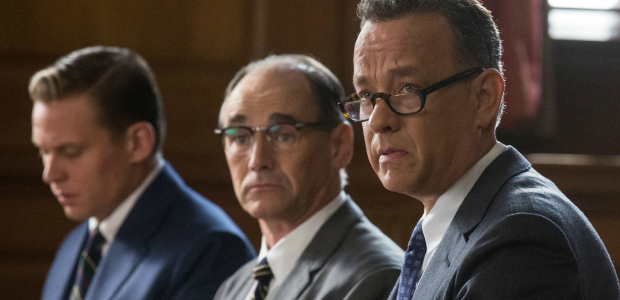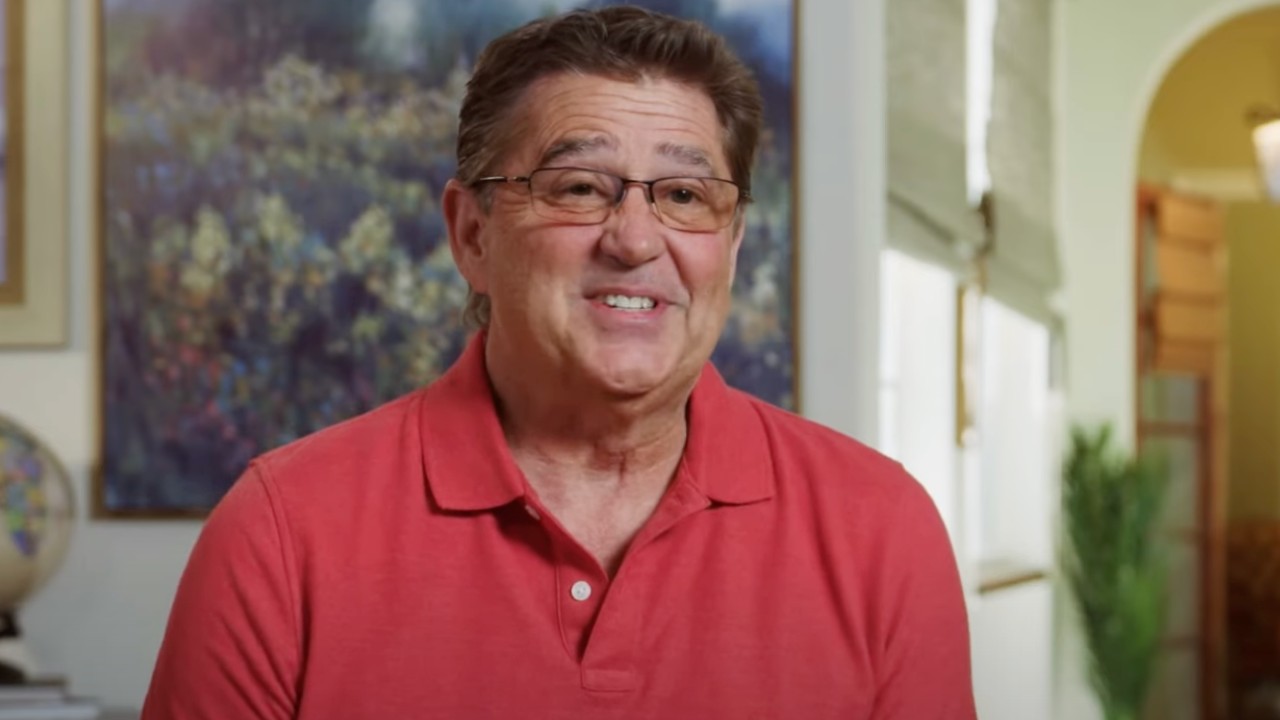Bridge of Spies is the kind of movie that you want to like because of those involved. It features director Steven Spielberg and veteran “Spielbergian” Tom Hanks, after the two previously teamed up for The Terminal, Catch Me If You Can, and Saving Private Ryan. I walked into the theater with high hopes for this new film about the trading of a captured Russian spy for a captured American one during the Cold War. As I exited the theater, my initial reaction was, “I liked it…I think.” But the more I did think about it, the more this bridge seemed to fall apart.
Bridge of Spies takes its story from the one told in Giles Whittell non-fiction book of the same name, subtitled A True Story of the Cold War. It’s a story about the first and most-famous prisoner exchange between American and Soviet forces. William Fisher, whose alias was Rudolf Abel (Mark Rylance), was a KGB agent captured by the FBI in New York City. Gary Powers (Austin Stowell) was an American U-2 pilot similarly charged with collecting information on the Soviets. He, too, was captured, while an American graduate student, Frederic Pryor (Will Rogers), was simultaneously arrested and mistaken for a spy in East Germany. These three are the subjects of Whittell’s book, which is compiled through interviews and research.
Spielberg’s film, on the other hand, works from an original screenplay that centers on James Donovan (Hanks), an American lawyer who was put in charge of negotiating the exchange of Powers and Abel, after he was asked to defend the latter in U.S. court. Whittell’s book weaves in and out between the three previously mentioned story arcs, whereas the film pulls back in this regard. Though it shows some of what Rudolph and Gary endured, it focuses mainly on James. It’s difficult to make the act of negotiating exciting, even with spitfire, juicy and witty dialogue afforded to Hanks from the Coen Brothers -- which is why this film is a lot funnier than you might expect. After all, it does seem a bit humorous how an insurance lawyer is asked to defend a criminal of his country and become an extension of the FBI.
While Bridge of Spies is very much a Tom Hanks film, Rylance delivers an unexpectedly entertaining performance. There aren’t very many scenes involving Rudolph Abel, but the ones that do are made brighter by his appearance. Not much is known about the real-life character Rylance plays, as he fled into hiding after the events that transpired, but the character actor portrays him brilliantly as this quiet, simple, and wonderfully artistic soul. His nonchalance is one of the best parts of the film — when James asks him why he’s not more worried about getting the death penalty, he calmly, innocently asks, “Would it help?”
For a film that’s more than two hours long, it does well in ensuring you don’t really fall asleep, despite the lengthy court and prisoner negotiations that ensue. Helping its cause along the way are interesting camera shots and lighting, often posing Hanks in front of an illuminated backdrop. In addition, there are beautifully rendered though soiled scenes depicting the construction of the Berlin Wall and the divide between East and West Germany. It’s a color palette akin to Spielberg’s own war scenes from Saving Private Ryan.
Where Bridge of Spies fails, to a certain degree, is in depicting an objective and balanced look at these events. It’s hard not to sing, “America, fuck yeah!” in your head at least once throughout the film. Though the American judicial system is rigged to fail James’ client, Abel’s awarded a boy-scout lawyer who believes in the Constitution and feels for his client so much that he continues fighting in spite of heat from his bosses, the government, and the American people. It’s commendable, and opens up an interesting dialogue about the state of our rights in this country. But it’s hard to believe Rudolph Abel wasn’t at least hassled for information regarding his mission.
As far as can see, he actually remains untouched, despite government officials and the American people demanding he be hung for his crimes. Meanwhile, there’s Powers over in Russia getting cold water thrown in his face, forced to stay awake, blasted with bright spotlights, and questioned for information on a daily basis. At times, I felt it was overkill and broaching the line of becoming the most exquisitely crafted propaganda film. Some of the cheesy and expected moments don’t help the film’s case. We see James looking out of a train car window as he’s crossing the border between East and West Germany. He watches in horror as people are gunned down trying to climb the wall, an image that blatantly recalled when James was back in America and watching kids climb gates.
By the time James’ wife (Amy Ryan) gazes triumphantly at her husband for his accomplishments, Spielberg’s melodrama can be a bit much. But then, there are moments of pure genius. The opening scene, for example, depicting the capture of Rudolph has little dialogue but is one of the film’s most exciting moments. From there, we segue into an exchange with Hank, who delivers a very Coens-esque “He’s not my guy” speech. It’s moments like these that make up for some of the duller sequences in Bridge of Spies. And though the end result is a fine film, it’s not a major achievement.











